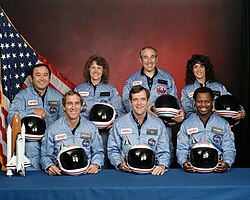Deaths

- January 7 – Rex Wailes (b. 1901), English engineer and historian of technology.
- January 28
- Crew of United States Space Shuttle Challenger mission STS-51-L:
- Greg Jarvis (b. 1944)
- Christa McAuliffe (b. 1948)
- Ronald McNair (b. 1950)
- Ellison Onizuka (b. 1946)
- Judith Resnik (b. 1949)
- Dick Scobee (b. 1939)
- Michael J. Smith (b. 1945)
- Dorothée Pullinger (b. 1894), French-born British production engineer.
- Crew of United States Space Shuttle Challenger mission STS-51-L:
- April 22 – Dame Honor Fell (b. 1900), English biologist.
- July 6 – William Rashkind (b. 1922), American cardiologist.
- July 21 – Zhang Yuzhe (b. 1902), Chinese astronomer.
- October 22 – Albert Szent-Györgyi (b. 1893), Hungarian physiologist, winner of the Nobel Prize in Physiology or Medicine.
- October 31 – Edward Adelbert Doisy (b. 1893), American biochemist, winner of the Nobel Prize in Physiology or Medicine.
- June 7 – Robert S. Mulliken (b. 1896), American physicist, winner of the Nobel Prize in Chemistry.
- November 25 – Sir Ivan Magill (b. 1888), British anesthesiologist.